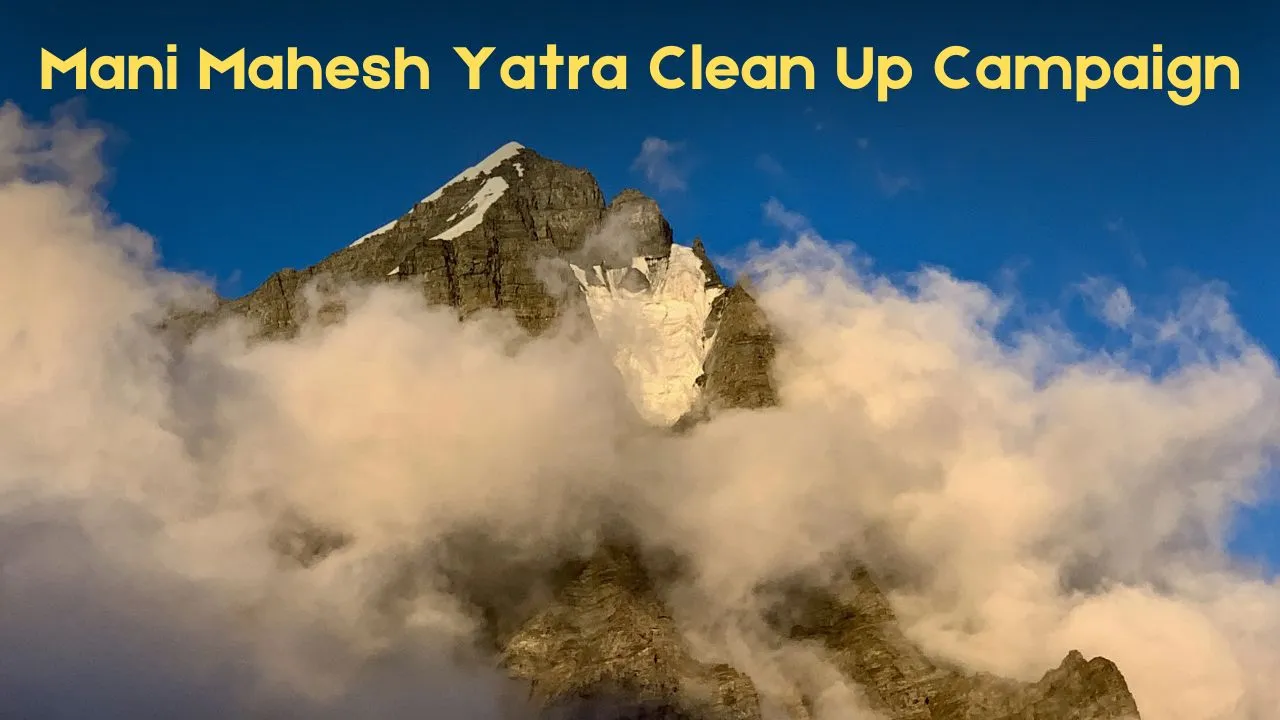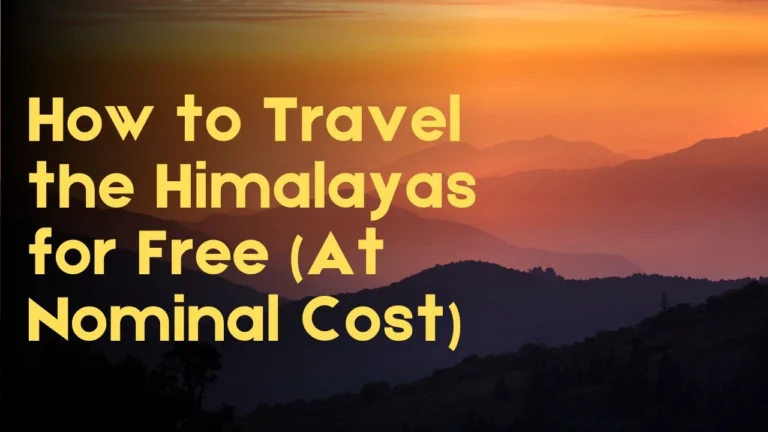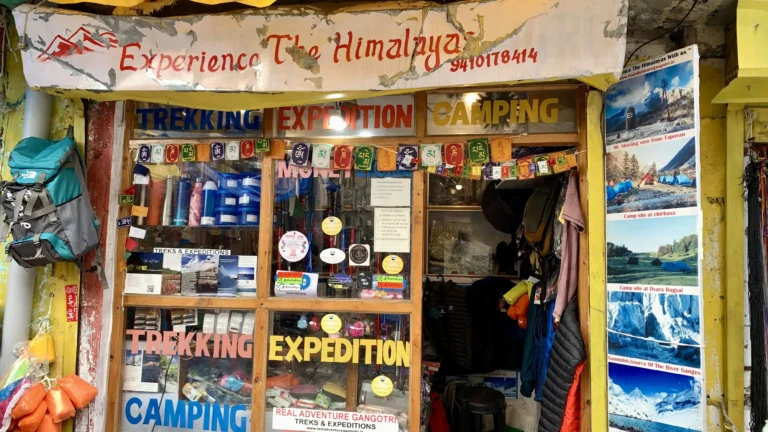My Experience at Mani Mahesh Cleanup Campaign
After hiking around 14 trails, I have come to the point where I follow the concept of “Hiking with a Purpose.” There are many NGOs working in the Himalayan states that provide the opportunity to travel to the Himalayas for free and give a purpose to hiking as well.
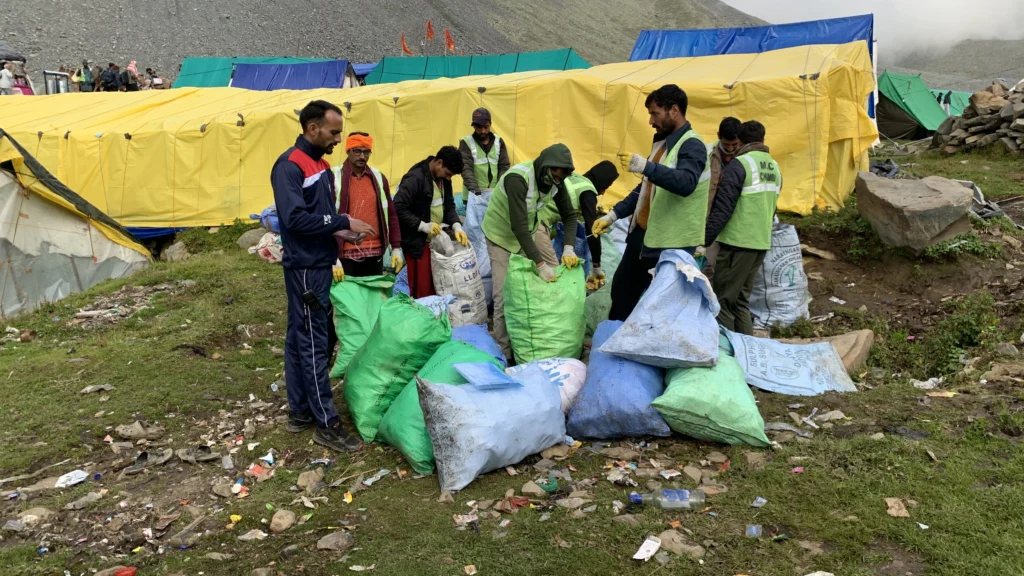
My first hike with a purpose was a cleanup campaign in Manali (March 2023) that was organized by Healing Himalayas. My volunteering was supposed to end on day 4, but I ended up staying there for more than 10 days. Over those 10 days, I met people whose values aligned with mine, which was to preserve the Himalayas. We organized cleanup campaigns at Hadima Temple, Manali Nature Park, and Vasisth Waterfall.
The next month, in April 2023, I volunteered at the Prashar Cleanup Campaign, and since then, I have been in contact with the Healing Himalayas team. This year, in August 2024, I got the opportunity to volunteer with Healing Himalayas again at Mani Mahesh Kailash. This blog is about my experience there.
Table of Contents
Mani Mahesh Yatra
Popular as one of the Panch Kailash, Mani Mahesh Kailash is located in the Chamba District of Himachal. The Yatra base camp is Hadsar, which is ahead of Bharmour, and the yatra each year starts from Janmashtami and lasts until Radha Ashtami. In 2025, the Mani Mahesh Yatra will start on Saturday, August 16, 2025.
My friend Ashu Nautiyal and I started our journey on August 21, 2024, from Chandigarh, and reached Hadsar on the afternoon of August 22. We stayed on the Mani Mahesh trail until September 2, 2024, and during the volunteering period, I spent my time at Dhancho, Gauri Kund, and Dal Lake. Ashu spent his volunteering period in Dhancho and Sundrassi.
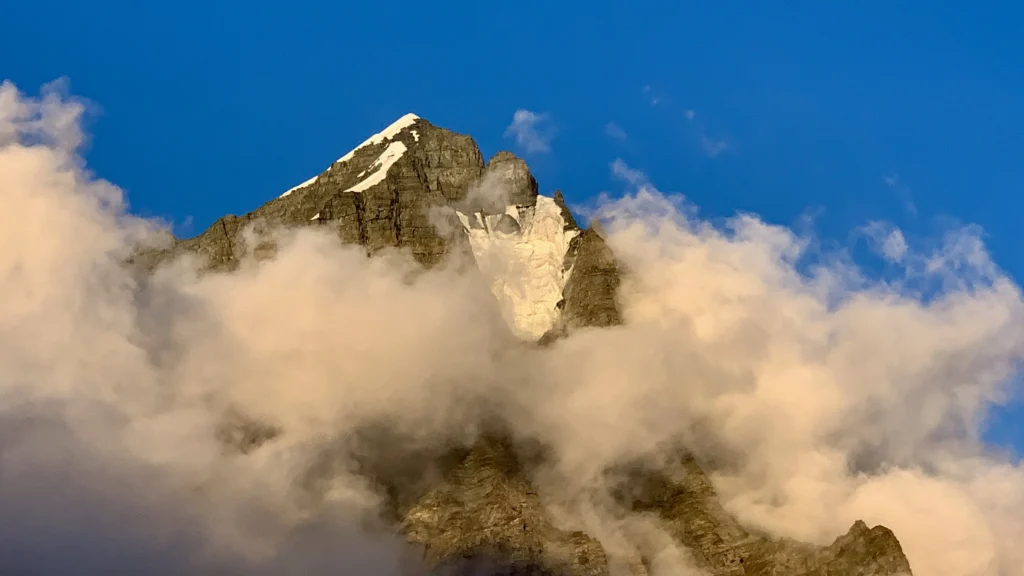
Healing Himalayas Cleanup Campain
Healing Himalayas has been working in the Himalayas, primarily in Himachal, since 2016. Over the years, they have managed to set up multiple MRFs (Material Recovery Facilities) at various locations in the Himalayas.
They have been organizing cleanups at Mani Mahesh for the past few years, but this year, in 2024, they planned to do it with more volunteers and proper resources. There were three batches that volunteers could join; I went in the first batch, which was from August 24 to September 2.
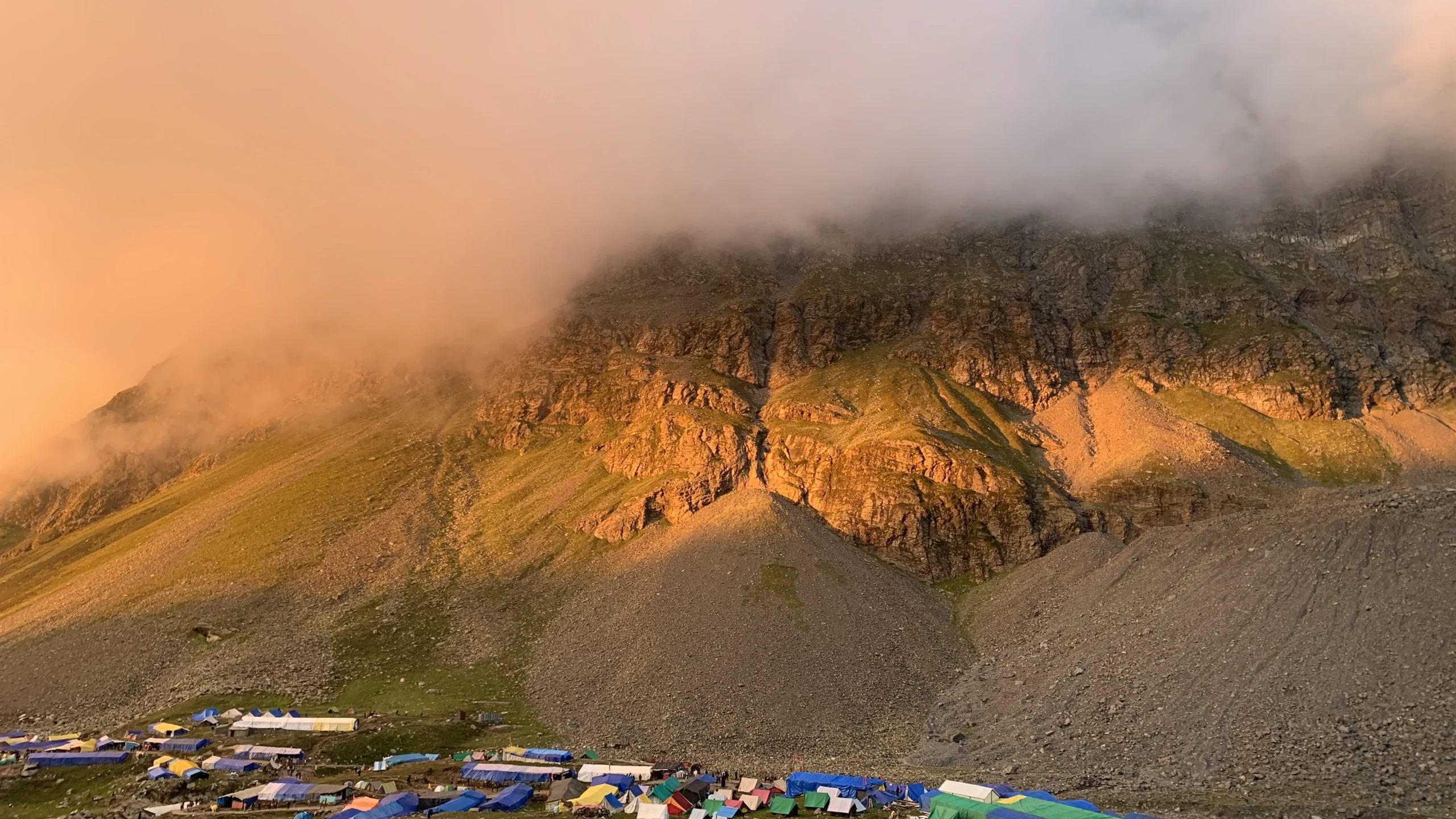
What was different this year?
A) More Volunteers: Before 2024, the Healing Himalayas team organized cleanups at Mani Mahesh Kailash, but they were usually fewer in number. This year, volunteers were deployed at various sites like Hadsar, Donali, Dhancho, Sundrassi, Gauri Kund, and Dal Lake. At one time, more than 3-4 volunteers were available at a particular campsite. This helped with data collection, awareness, and overseeing the waste collection process.
B) MC Chamba Team: Earlier, it was just Healing Himalayas volunteers who picked up and collected the waste, but this time, with the support of local authorities, MC Chamba workers were deployed to collect the waste material. This not only meant more workforce but also efficient waste collection. At every campsite, there were 8-14 sanitation workers who oversaw the waste collection, and the Healing Himalayas volunteers were responsible for overseeing whether workers were collecting waste properly or not. Volunteers ensured that the waste was collected from all the shops and langars, waste was being segregated properly and all the bags were marked properly with the code. This helped us collect waste efficiently, thanks to the local authorities.
C) Support from SDM Chamba: Local authorities not only solved workforce problems but also helped us with our accommodation issues. At every campsite, tents were allocated for Healing Himalayas volunteers. We were provided with ID cards that helped us enforce waste collection measures properly. With their support, an MRF is set to be constructed in Bharmour for better waste management. It will be ready by the next yatra season, which is 2025.
D) Data Collection: Data is important, and this time there was a coding system that was written by a volunteer on every bag. It helped with data collection, data visualization, and presenting it to the world.
Example: D-001/A-26/PET/05/08
- D denotes the campsite, which is Dhancho.
- 001 denotes the number of bags packaged.
- A-26 means the month and date, which is August 26.
- PET refers to PET bottles.
- 05 is the volunteer ID.
- 08 is the weight of the bag.
Every packed bag had this code, and volunteers ensured not a single bag was left unmarked. The entire data for the day was broadcasted on a page: https://mm24.healinghimalayas.org/.
Wondering how we communicated, given there is no connection after Donali? Wireless devices, Walkie Talkies (Personal Mobile Radios), were available at each campsite. Every evening, data was shared with the flow from Dal Lake to Gauri Kund > Dal Lake, and Gauri Kund data was communicated to Sundrassi. Volunteers at Sundrassi then communicated the collection data of Gauri Kund, Sundrassi, and Dal Lake to Dhancho. The volunteers of Dhancho would then descend down to Donali (where connection is available) and share the data of all the campsites via text and call to the Hadsar team. The Hadsar team then broadcasted that data to the webpage. It was one big task, and the team at Dhancho had all of the campsite data to share. This data will help us with future campaigns and in presenting our results and reports to local authorities.
E) Collaboration with Various NGOs: We Indians don’t know much about waste management. For instance, I remember I started using a dustbin in the 5th class when our teacher made us clean our classroom. I don’t know what I used before that. I’m sharing this instance because it reflects the reality in India. People are not aware of waste and how to handle it properly. When people are throwing bottles or plastic, can you stop them beforehand? No. But we can at least make them aware. At Hadsar, volunteers from other NGOs were present to educate people about throwing their waste in dustbins. Boards and signage were installed by Healing Himalayas and MC Chamba to communicate this message. At the campsites, various langar pradhans announced the importance of using dustbins. All of this helped us to some extent.
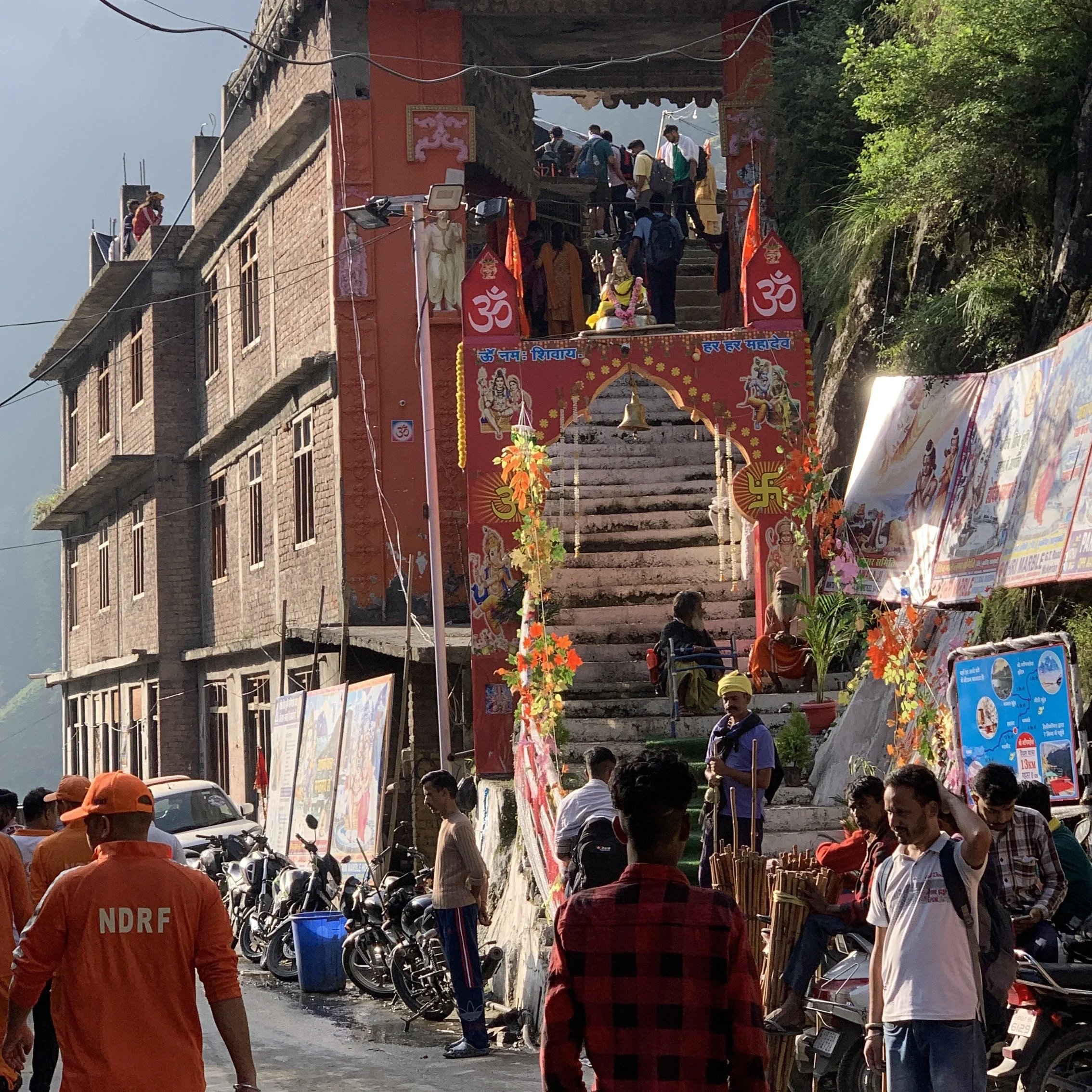
How Was My Experience?
Hiking—I love it! And if I can hike for a purpose, then why not? I’m up for it anytime. Spending 15 days in the Himalayas, especially in Mani Mahesh Kailash, is an opportunity that doesn’t come to just anyone. When I filled out the form and received calls from Abhilaksh and Ravindra Bhaiya, I realized something big was happening here, and I wanted to be part of it. The next day, I connected with my boss at Himalayan Dream Treks and told them I needed 15 days off. They agreed, and in the following days, I was back on the trail again.
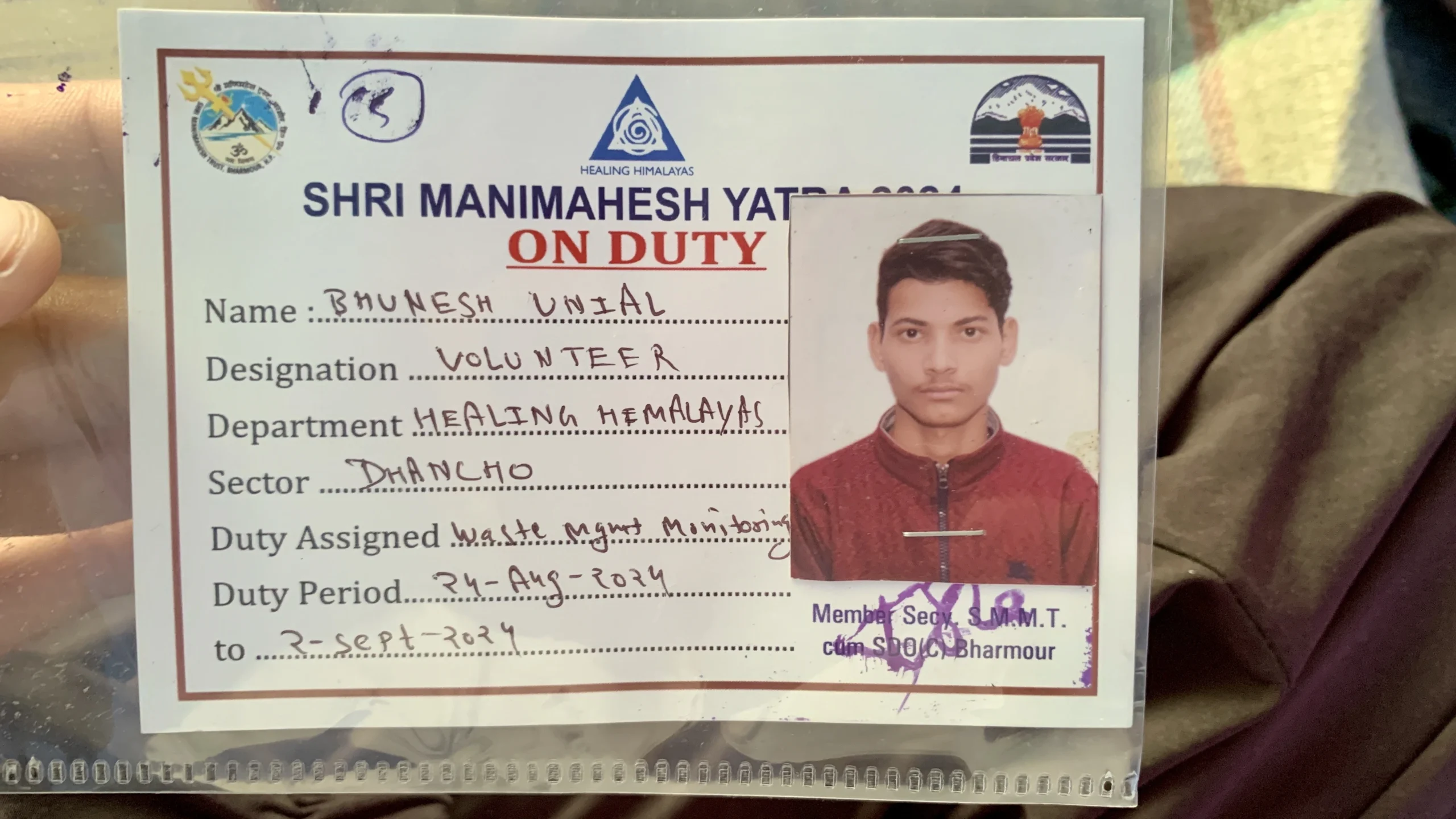
Over those 15 days, I volunteered at Dhancho, Dal Lake, and Gauri Kund. In the process, I learned a lot about waste management, the implications of over-tourism, selfless acts, Shift in Pilgrimage Purpose, and my love for the Himalayas.
There are some aspects where we at Healing Himalayas need to improve and that is the Stay and Toilet facility. By next year yatra we will solve these issues.
My Observations:
1) Selfless Acts: When my friend and I first reached Hadsar after a 24-hour journey from Chandigarh, we were really hungry. We got out of the taxi, and there was a decent-looking dhaba where people were sitting at tables and having their food. It was neat and clean, and the food looked good. I said to Ashu, “This looks good; we can have our lunch here.” Later on, when we inquired, we realized that it was a langar. The food that day tasted even better. I was truly grateful to the person who set up the langar. And you know what? There were multiple langars at Hadsar itself providing free food. They served Dal Chawal, Roti Sabji, Dosa, Samosa, sweet dishes, and more. Every campsite from Hadsar to Dal had langars.
Later, I thought about the resources it takes and realized it’s a big commitment. All the workforce, rations, mules, and supplies required to organize a langar for the entire yatra period are significant. Some langars have been organizing food services for the past 10-20 years. Selfless acts like this make you realize the beauty of humanity. This experience at Mani Mahesh Yatra amazed me because we don’t have anything like this in Char Dham, Uttarakhand.
2) Implications of Over-Tourism: This topic has been in the limelight for the past few years. Tourism is good for the economy, infrastructure development, and employment, but what happens when tourism goes out of hand? Most Himalayan destinations now suffer from over-tourism, and Mani Mahesh is struggling with it too. The yatra occurs between Janmashtami and Radha Ashtami. On Janmashtami (26 August 2024), a huge crowd of pilgrims was on the trail, but resources were limited.
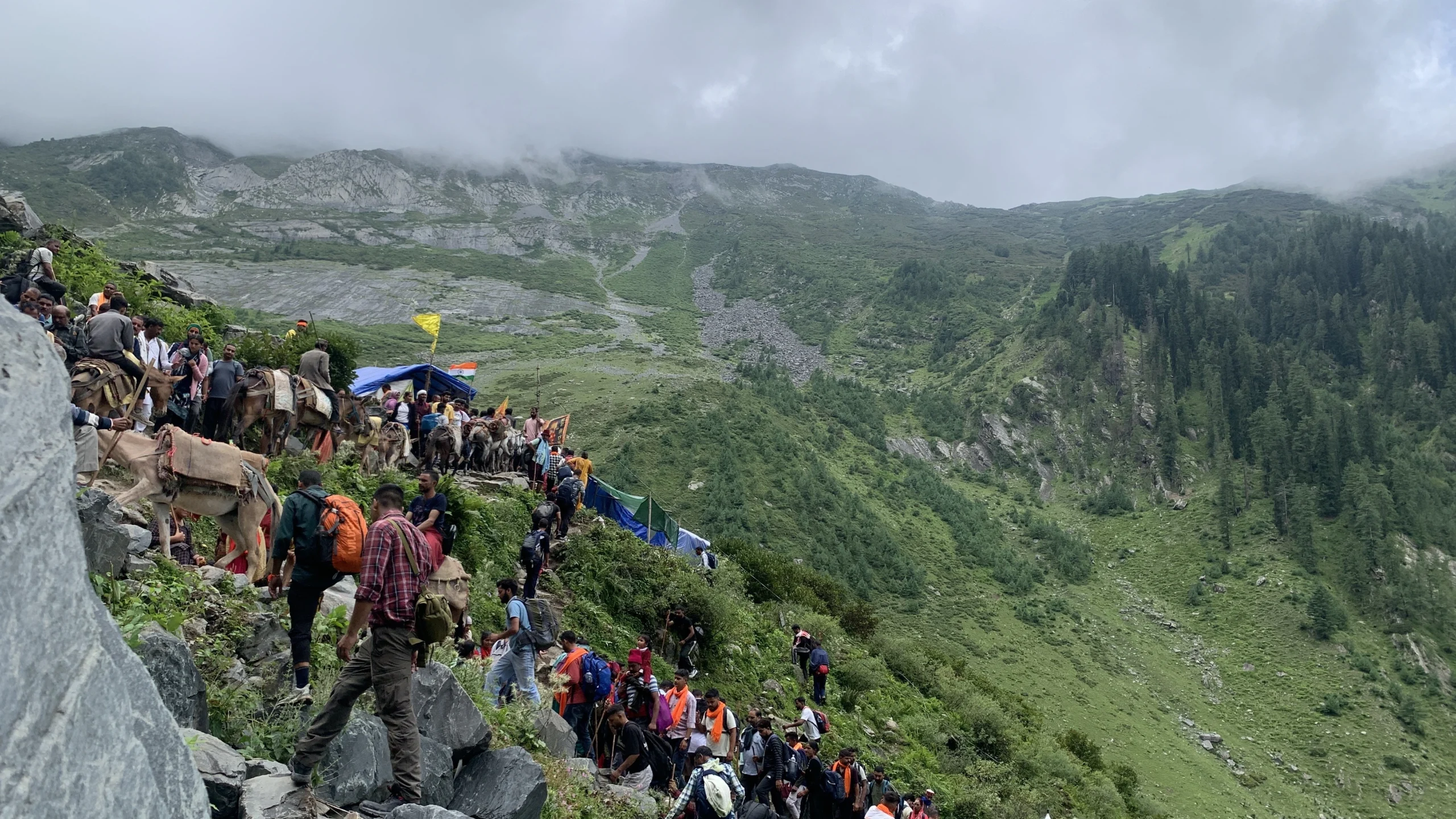
Many people got separated from their family or friends on the trail. Just hundreds of toilets were not sufficient to meet the demand. As a result, people resorted to doing their business on the trails, outside of tents, and in rivers, near water sources. Contaminated water sources resulted in waterborne diseases. Due to the crowd on the designated trail, people left the stone-paved path and created their own routes through meadows, leading to evident soil erosion.
People have thrown their waste to the sides of cliffs (cleanup can’t be done here), in rivers, and in meadows. Two helicopters operated in the valley early morning to evening from Bharmour to Gauri Kund Helipad. There’s no electricity connection, so langars, medical camps, and shops use generators to produce electricity. All of this not only creates noise pollution but also air pollution. Authorities at least need to keep track of the models of generators being used. Most of the generators there are old, running on diesel and petrol, making them loud and producing a lot of soot. In an eco-sensitive area like the Himalayas, even a small pollutant can change the entire ecology. With Kugti Wildlife Sanctuary nearby, all the pollutants are harming not only Budhil Valley but also KWS.
3) Shift in Pilgrimage Purpose: Chamba Kailash is one of the Panch Kailash. You can gauge its significance simply from the fact that it is one of the Kailash. During my journey, I saw people from Lahaul Spiti who came on the 23rd-24th of August, before Janmashtami via Kugti Pass. They sang bhajans all night and left the next day. I heard from a local uncle (who provided us with tent accommodation at Dal) that the yatra was once conducted differently.
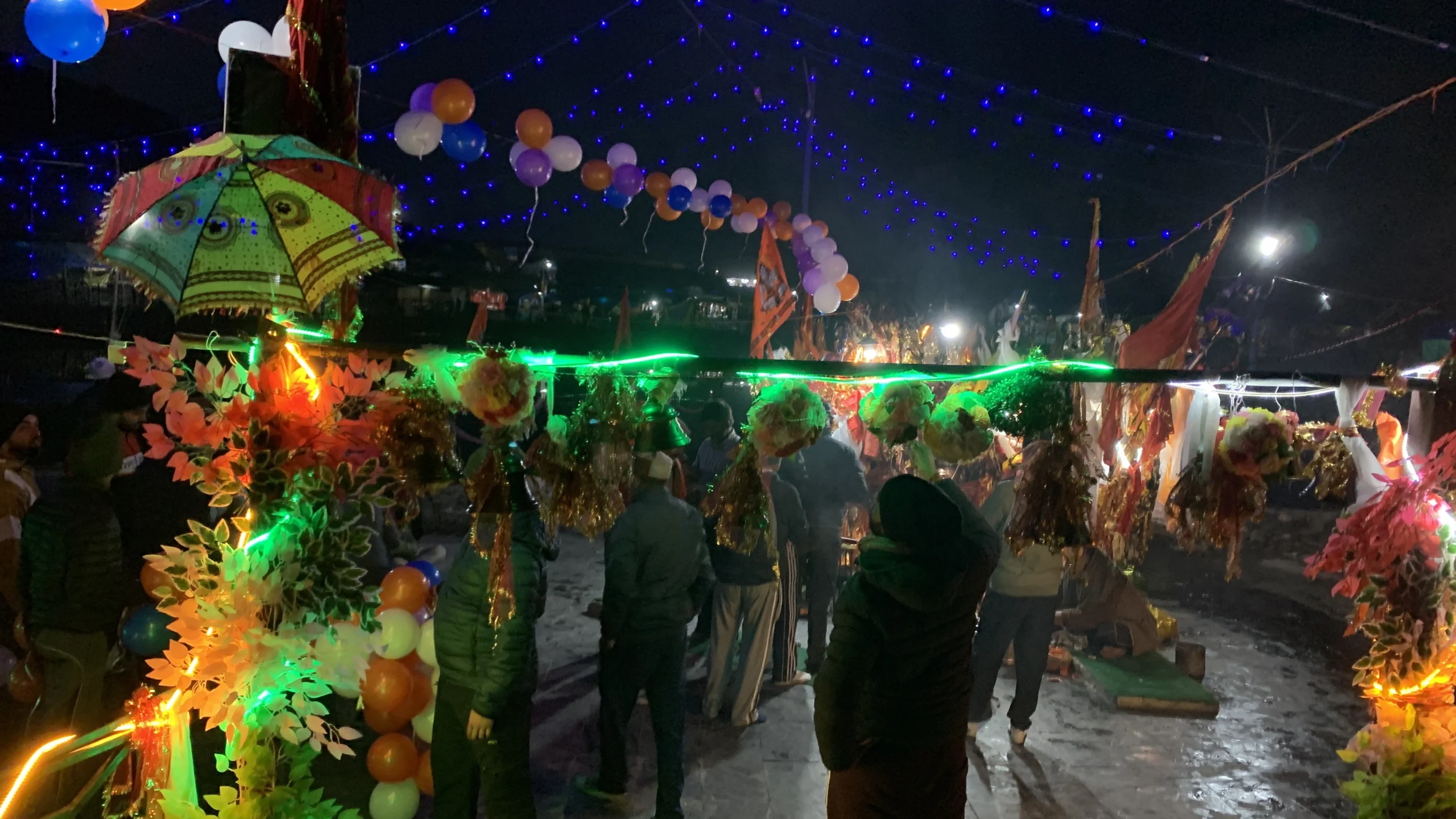
“People used to start early in the morning from Hadsar, reach Dal, have their sanan, and then leave the same day. We consider this region pavitra, and we did this to avoid leaving any pollutants here. After all, human excreta is a pollutant as well; at this height, it is hard for it to decompose. That’s how the yatra was done, and now it has changed,” said the tent wale uncle ( forgot to ask their name).
Over my 15-day stay, I met many people: locals from Himachal, visitors from other states, some young, some old, some devotional, and some not so devotional.
A significant portion of the crowd was there just for a recreational trip. People would sit anywhere on the trail and smoke their hukka. Bhaang was their favorite pastime. Wherever I went, some people out of the blue asked for weed or offered it to me. People are not supposed to make noise on the trail or at Dal, yet I frequently heard phrases like, “Bhola baith pathar mein, Parvati ke chakkar mein,” and “Bhole ki foj, kargei moj.” Do these sentences make any sense to you?
All of this detracts from the atmosphere of reverence and spirituality and poses challenges in maintaining the sanctity and discipline expected on a yatra. Some people should not be there.
4) My Love for the Himalayas: I have always been in love with them. I was born there, and my village is in the Himalayas, surrounded by deep forests of pine and oak. Every now and then, the noises of wildlife can be heard. This raw experience is not found in Dehradun or Chandigarh. Spending 15 days there was not easy, but it was also easy in a way. I don’t know if you understand what I mean; I’m unable to put it into words.
Over those 15 days, we faced problems with our tents, rain, toilets, pilgrims, not being able to shower, some langar operators, and management issues. But it was all worth it. There was something there that kept us dedicated to our duty. When I told my friends and family how I spent my days in the Himalayas, they said I was so lucky to have traveled and hiked for two weeks. Most of us have seen the romanticized version of hiking. But the raw version involves struggling with toilets, altered schedules of bowel movements, sleep disruptions, fatigue, changes in food habits, not being able to shower, and mountain sickness. After all this, there are principles that one must follow, like Leave No Trace, Poop in the Wilderness, and Stay on the Trail, but I found that none were being followed.
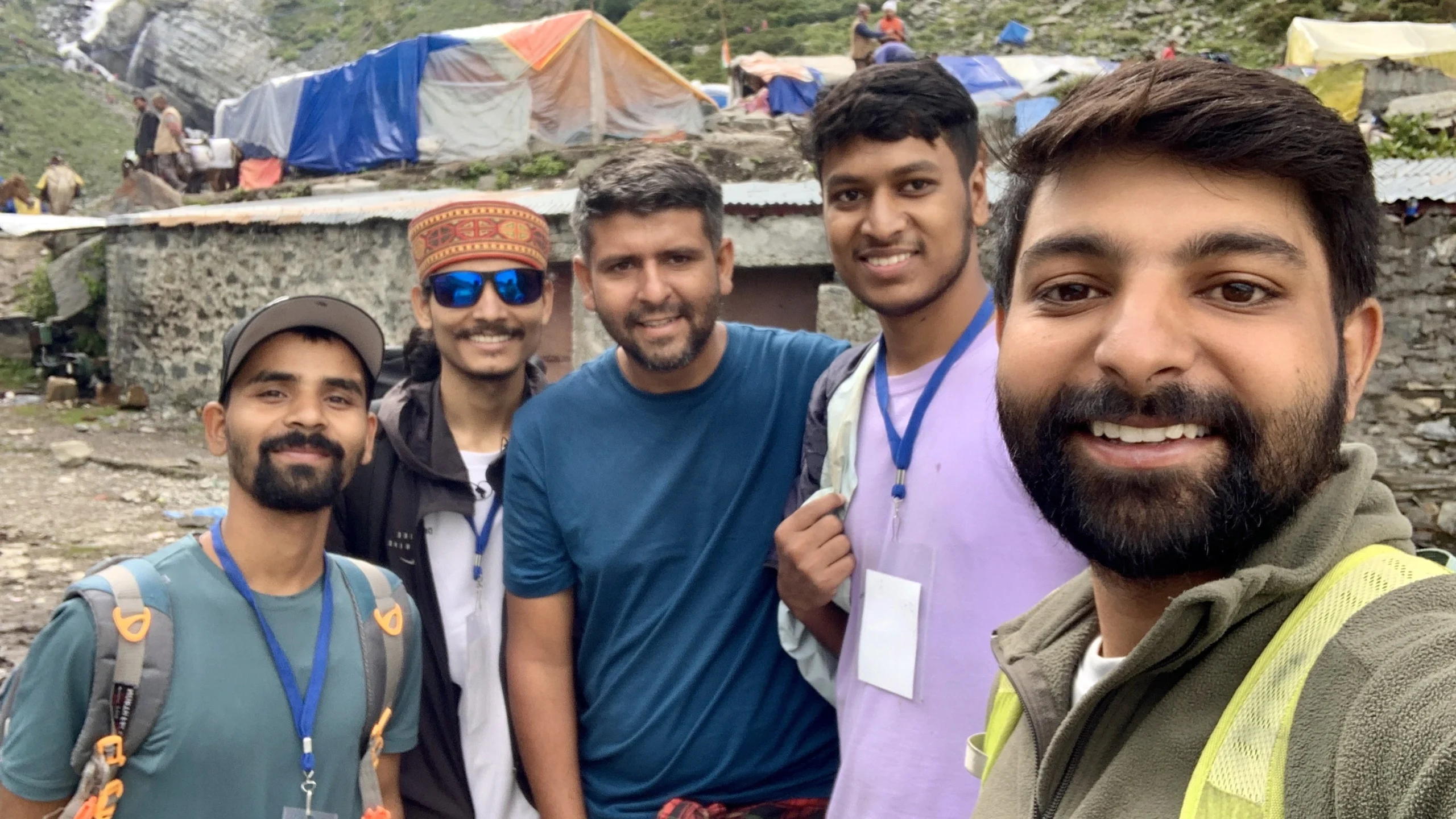
With so many problems, all of us volunteers found ourselves loving the Himalayas more than ordinary people. We were there just for the Himalayas. We all had work to do; all of us has an easy life in cities, we could go on drives and travel but instead, we chose to be there, face all the problems, and pick up waste. Our love for the Himalayas is not the romanticized version that most people seem to have. Instead, it’s raw, just like Alexander Supertramp’s love for Alaska, John Muir’s love for the Sierra Nevada, and Bill Aitken’s love for the Garhwal Himalayas. At Healing Himalayas, our love for these peaks goes deep into our soul, and identity.
5) Problems Can Be Solved: What’s the main problem we are facing? There is no proper waste management in the Himalayas (and even most Indian cities don’t have that). A simple solution is to deploy Material Recovery Facilities (MRFs) at hotspot locations. Kedarnath receives lakhs of tourists every year, and so does Gangotri. But there are no MRFs at places like Sonprayag or Uttarkashi. Let me tell you, for the government, it’s not that big of a task to set up MRFs. Yet they don’t seem to do it.
We, as the youth of this country, should demand relevant policies and rules. Have discussions with your friend circle about climate change and solutions, policy-making, and good governance. Teach and make your young siblings, friends, and kids in your society aware of the Himalayas, waste management, and the importance of using dustbins. Ignite the love of hiking in them, but the real hiking, not the romanticized version.
Travel to the far reaches of the Himalayas, but be prepared: bring your steel bottle, adopt minimalistic habits, and keep Leave No Trace principles in mind.
Gallery
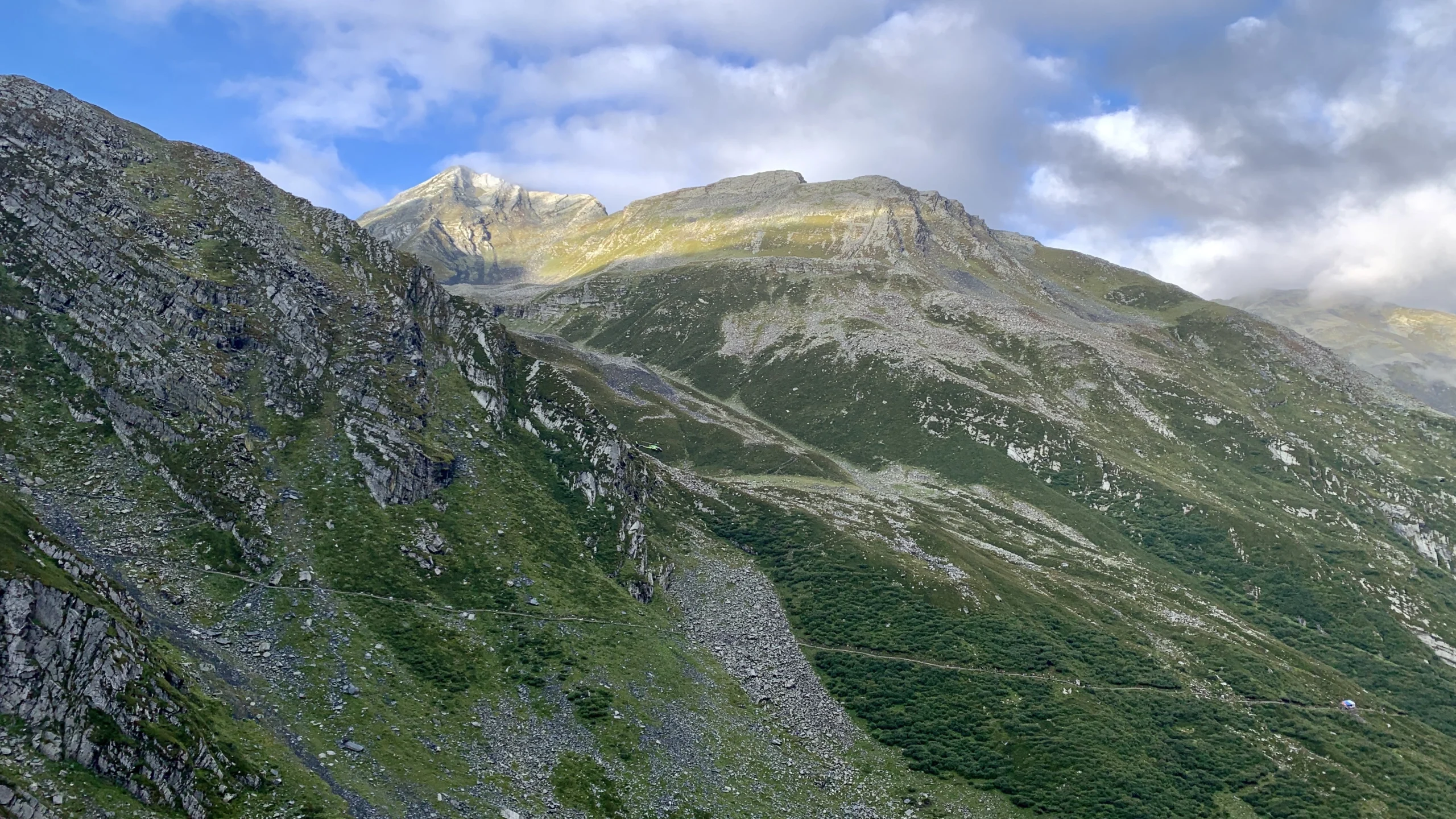

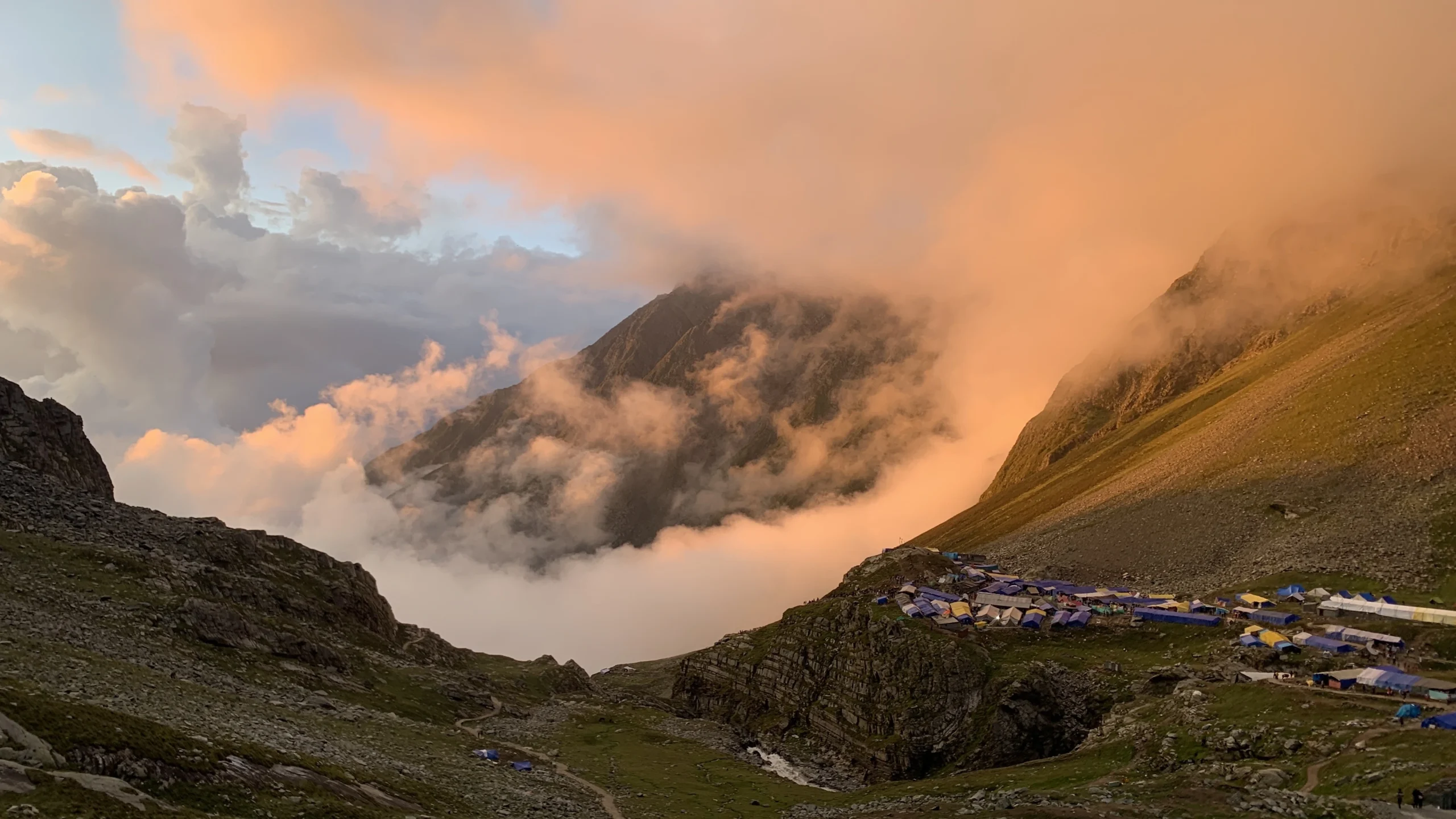
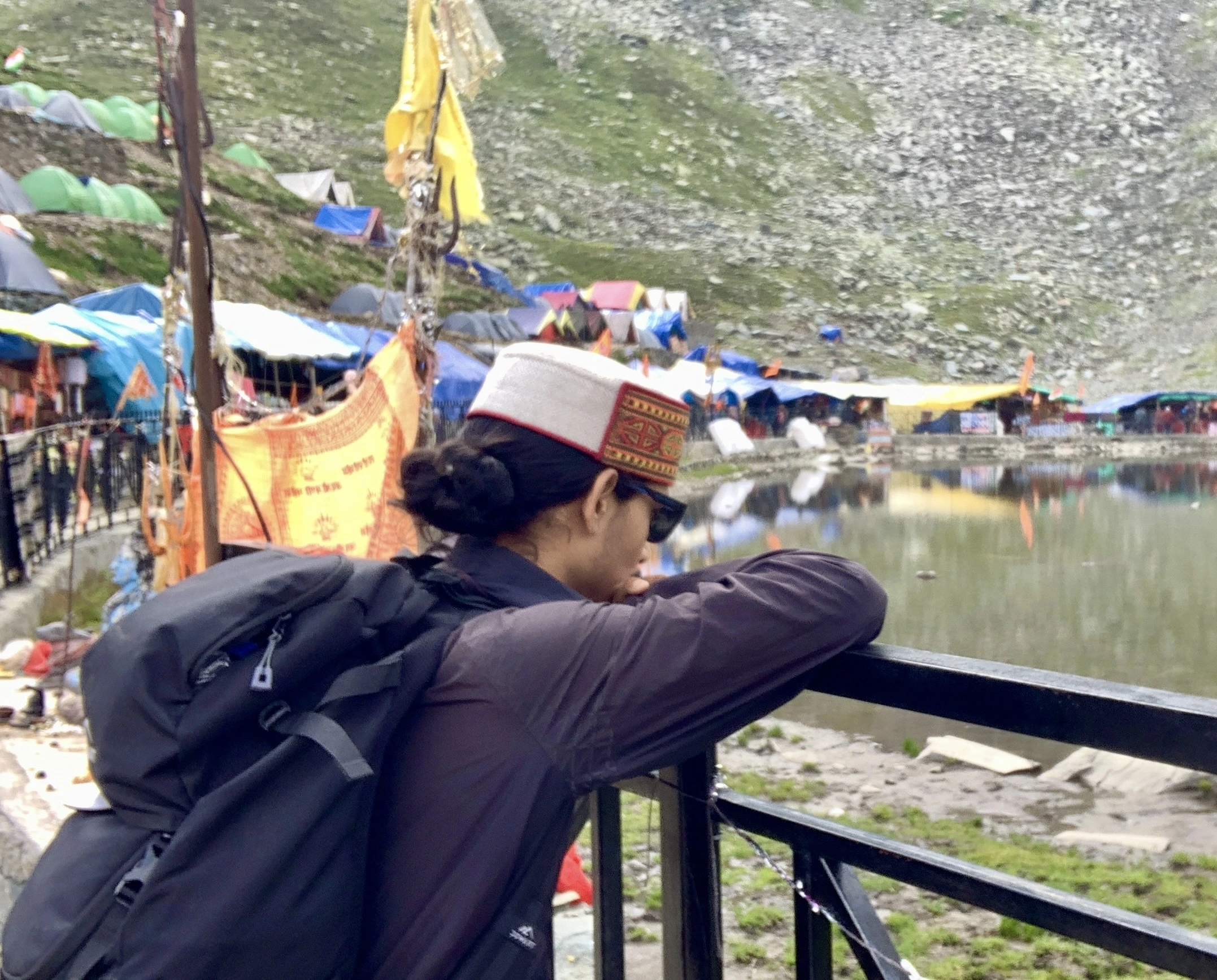
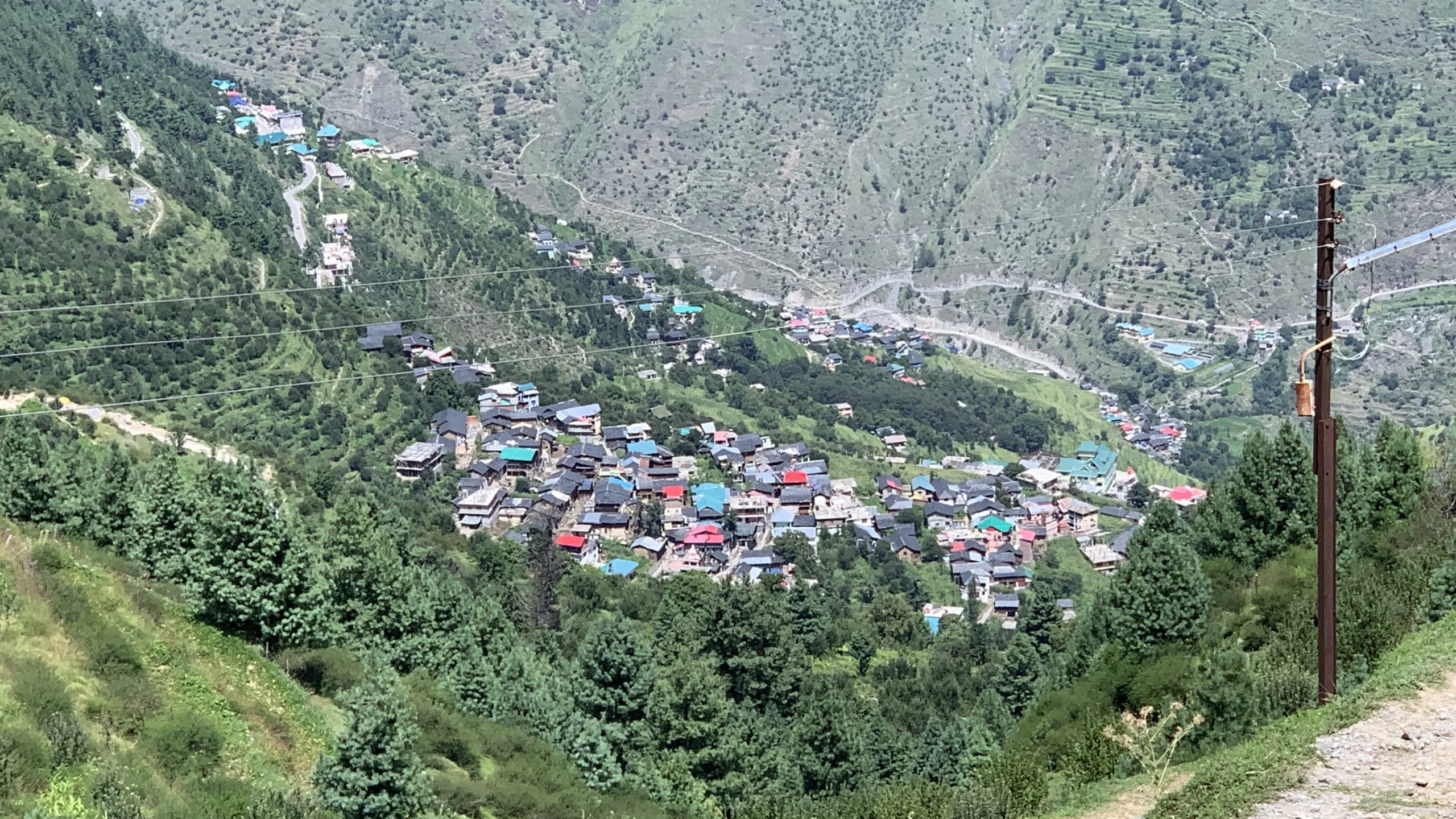
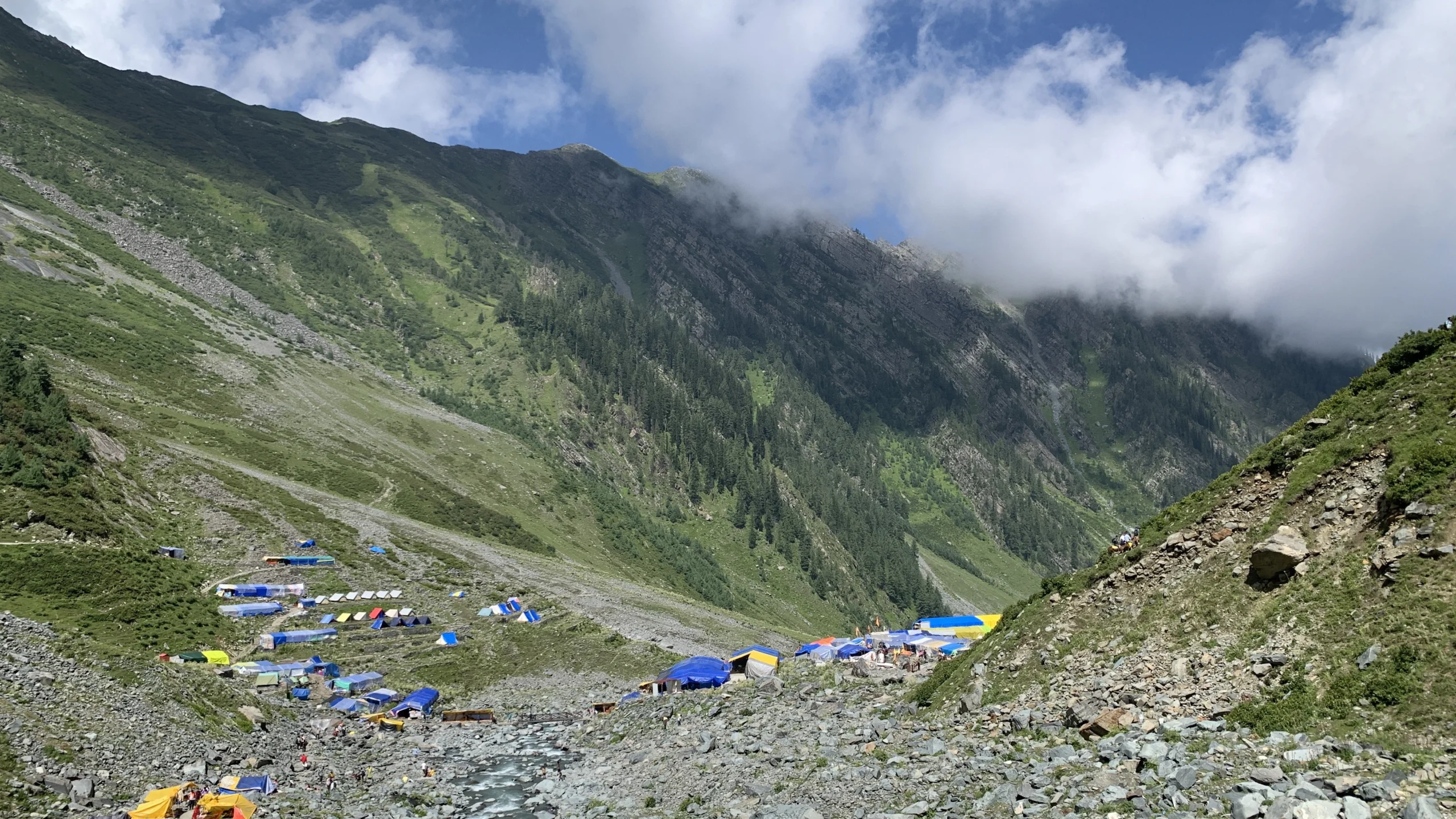
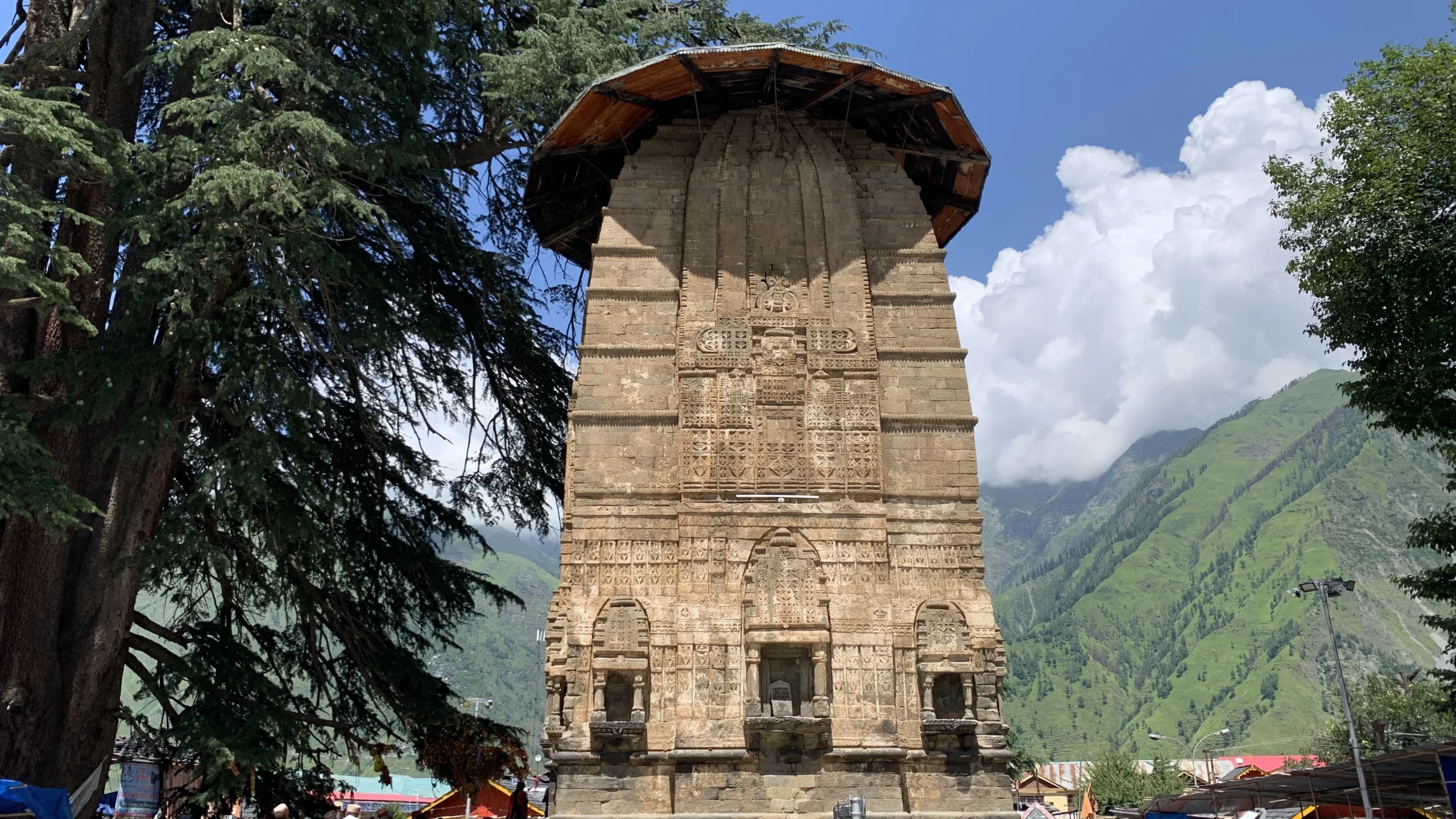
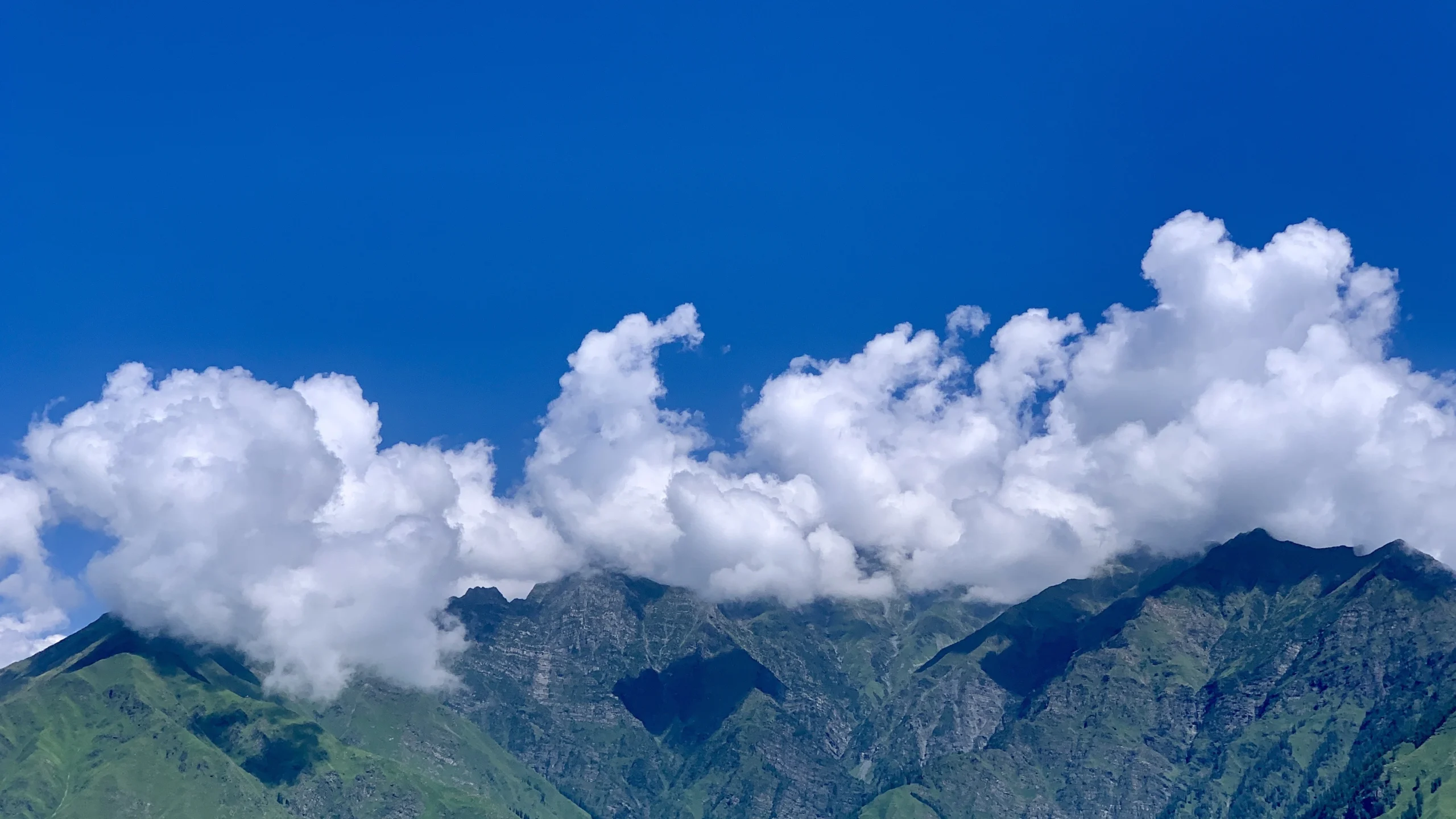
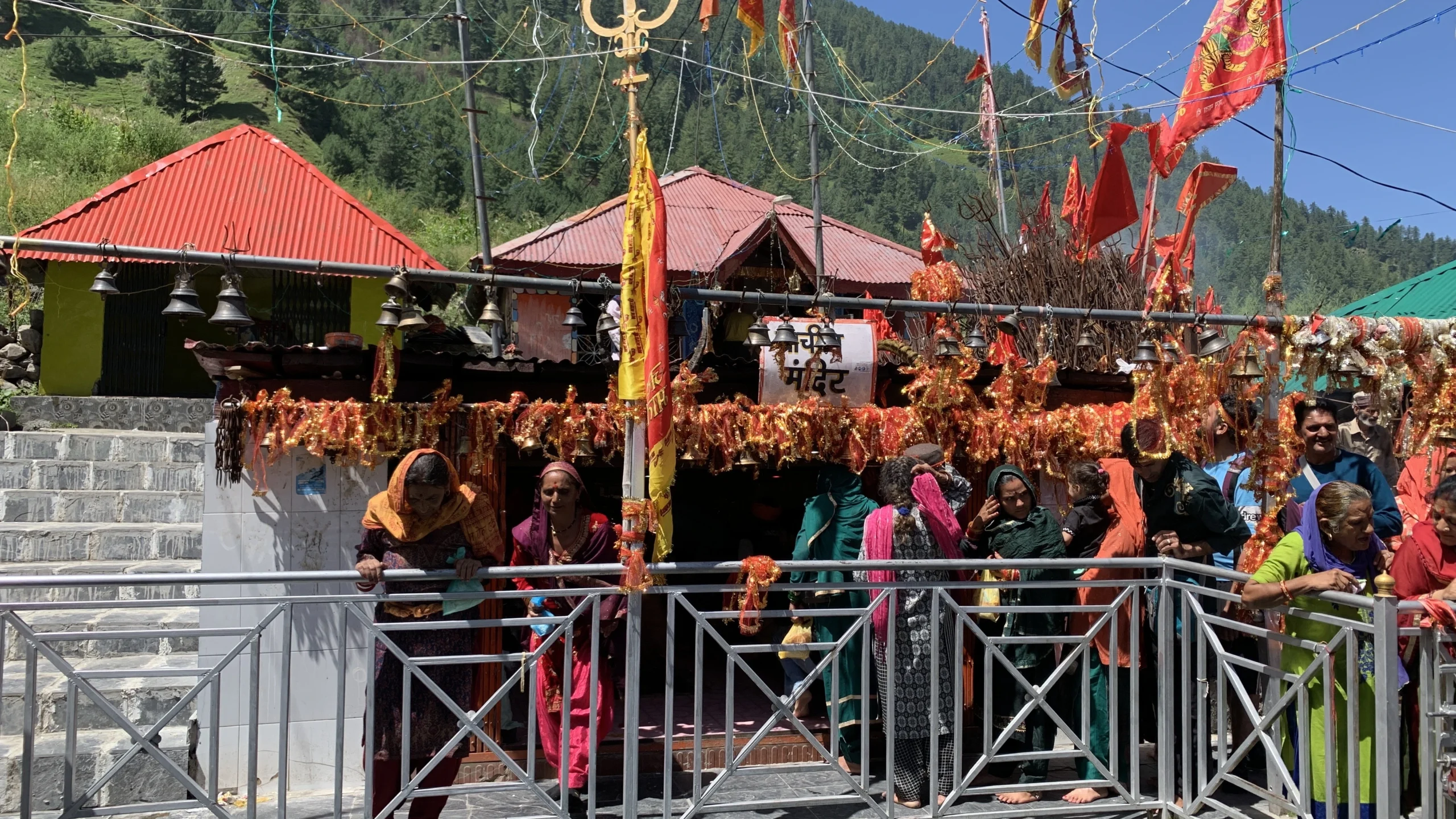
Summary
This is all for today’s blog. There are many more things I could have shared, but it would make the blog lengthy. I’m looking forward to next year’s Mani Mahesh Cleanup campaign. If this content helped you in any way, you can connect with me here to share your thoughts or insights at bhuvi@develosquad.com. If you would like to join next year’s cleanup, you can connect with me, and I will guide you.
Thanks.
To the Himalayas and beyond!

